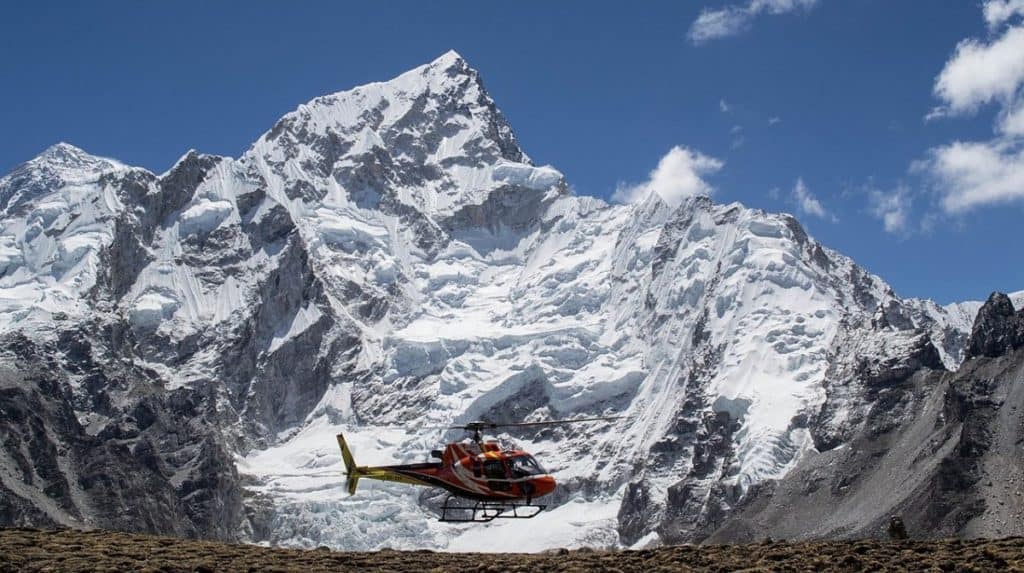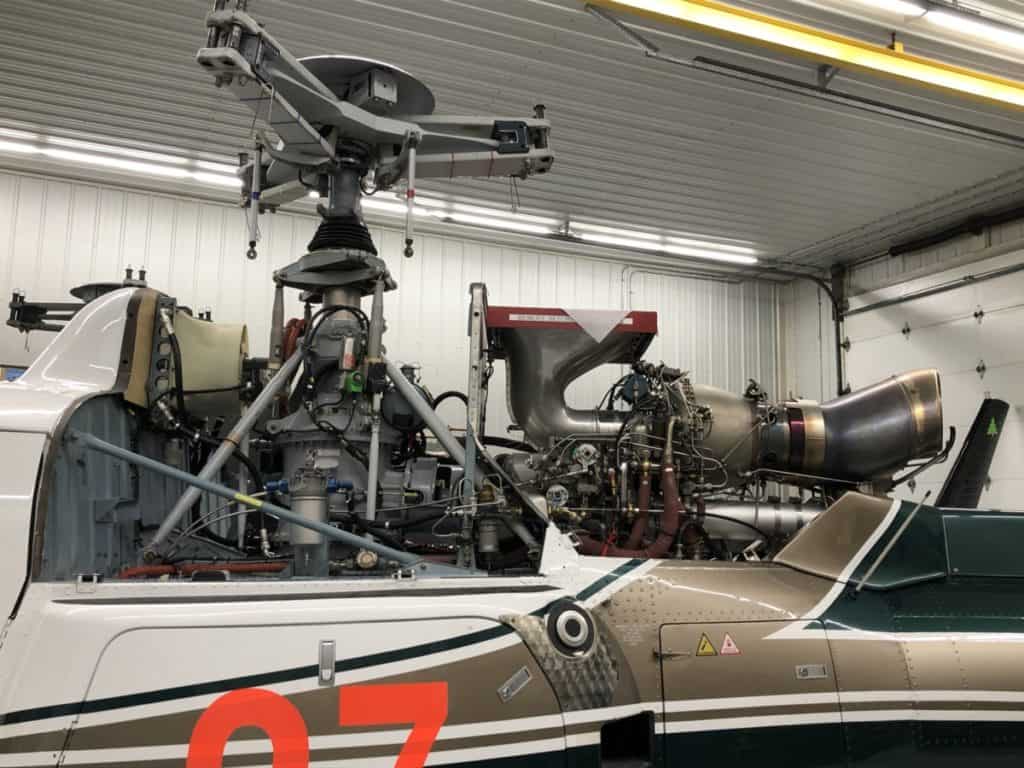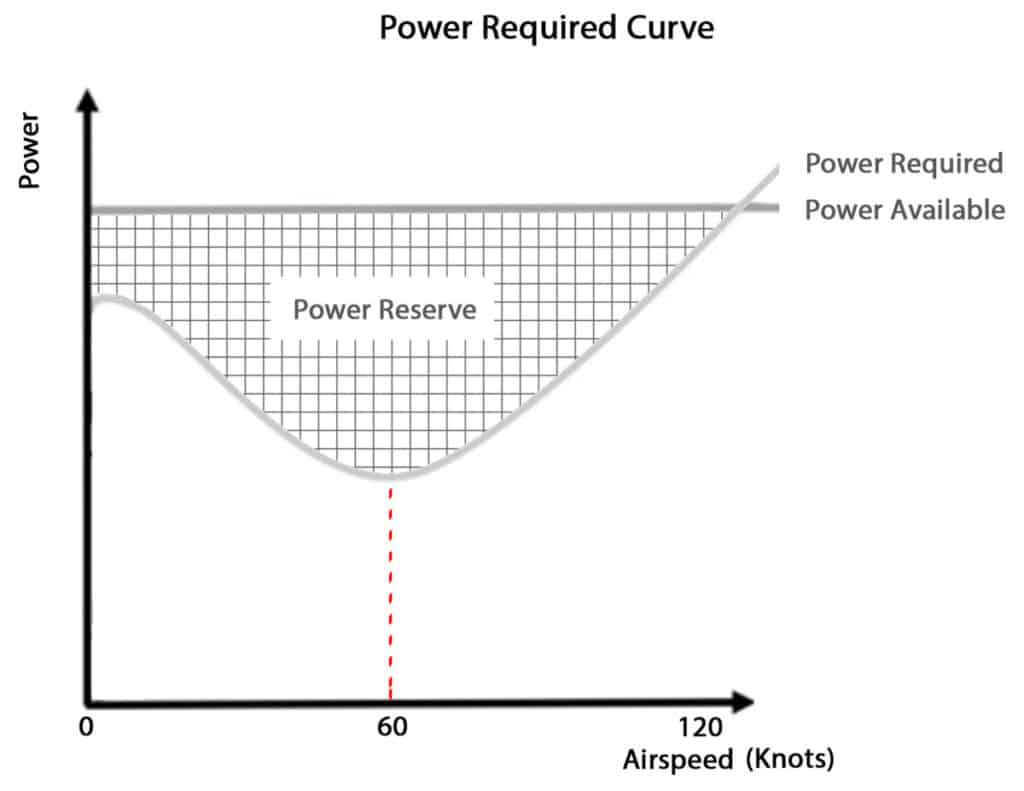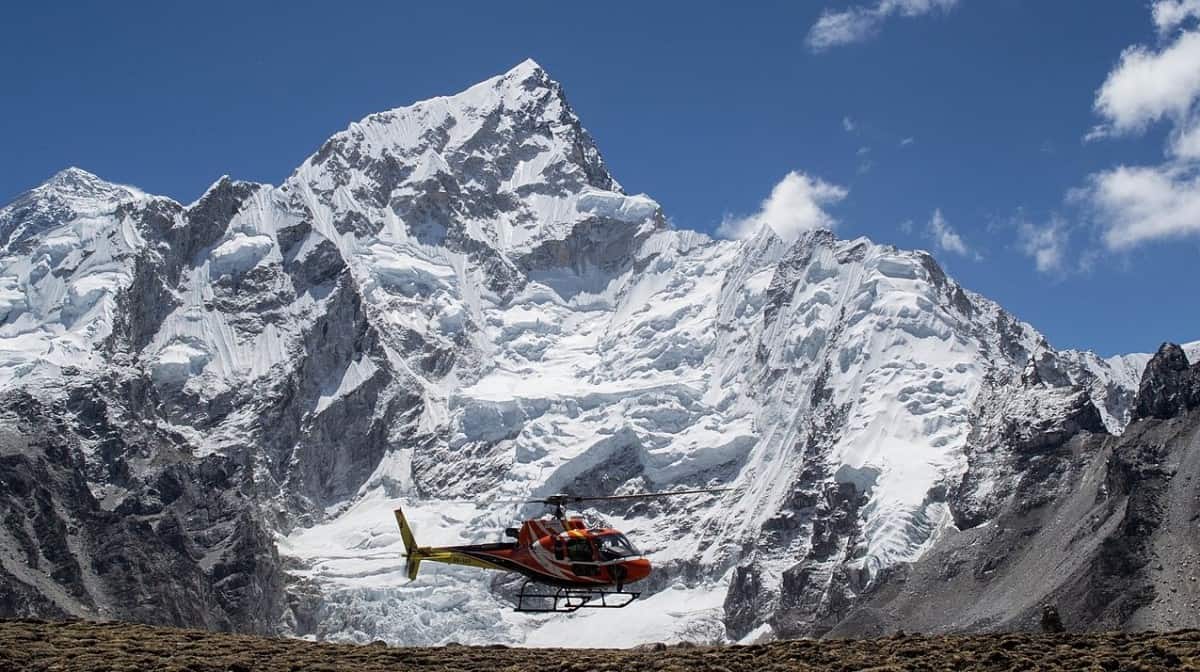
Every year thousands of people take on the challenge of trying to summit Mount Everest but unfortunately many get into complications that require being rescued. We all know that helicopters are a great tool for performing a rescue, so why can’t they be used on Mount Everest?
Helicopters can regularly land at Everest Camp 2 at 21,000ft/6,400m to transfer and evacuate climbers. Any higher than this and the air density can become too thin for the helicopter to produce enough lift to enable a pilot to rescue a stranded or injured climber.
As a helicopter pilot who has flown in the mountains in the same aircraft that are used around Mount Everest and by the world record-setting summit landing in 2005, I’m going to tell you why helicopters are unable to rescue climbers from the top – Well at this point in time anyway!
There are many factors that work against helicopters as they get higher up the mountain. Some of these are atmospheric and some of them are aerodynamic.
At this point in time, there has only been one helicopter to land on top of Mount Everest and that was a Eurocopter (now Airbus) AS350 B3 that was stripped of every weight-adding piece of equipment and flown by one of the manufacturer’s test pilots.
Here is the video covering that monumental, record-setting flight:
What are the Factors that Affect How High Helicopters Can Land?
The higher a helicopter flies, the harder it becomes to fly and the harder its engine and rotor systems have to work to keep it airborne. Here are the main factors that affect how high a helicopter can land on a mountain:
Air Density, Lift & Controllability
At sea level, a cubic meter of air has the weight of all the air molecules above it pushing down on it. This packs in the air molecules tightly into the cubic meter of space. This is a Dense pocket of air. The same happens underwater but with water molecules.
As the same cubic meter parcel gets higher into the atmosphere it has fewer molecules above it pushing down on it, thus the force packing the molecules into that space is less so there are fewer air molecules being packed into that cubic meter parcel.
The higher you go, or a helicopter goes, the fewer air molecules there are in a given pocket of air. It is the number of air molecules in a given area that greatly affects the helicopter.
The helicopter has three main parts that work with the air molecules:
- The Engine
- The Main Rotor System
- The Tail Rotor System
The Engine:
The engine sucks in air and mixes it with fuel which it then ignites and uses the rapid expansion of the gas to drive the power turbine or pistons, depending on the engine. These parts are then linked to the transmission which turns the main rotor and tail rotor systems.
The fewer air molecules the engine sucks in, the less fuel it mixes with that air, and the less power the engine produces. Therefore the higher the helicopter goes, the less power the engine produces.
The Main Rotor System:
Depending on the type of helicopter, it can have anywhere between 2 and 8 main rotor blades. These all connect to a hub that connects to the main rotor mast which is turned by the engine and transmission. As the main rotor system turns, the main rotor blades move through the air and act as wings to produce lift.
The main rotor system of a helicopter turns at a constant RPM. For the AS350 that landed on Mount Everest, that RPM is 390rpm. The pilot can control the main rotor blades by changing their pitch angle to create more lift. As they increase their pitch angle, they also create more drag. This drag will slow the rpm of the main rotor system so the engine automatically increases its power to overcome the drag and maintain the RPM.
At high altitudes, the pitch angle of the rotor blades gets too high which creates very large amounts of drag for the engine to overcome. Once the engine reaches its maximum power, the rotor rpm will begin to decay and the helicopter must descend to stay flying. This is one of the limiting factors on how high the helicopter can go.

The second limiting factor on the main rotor system is the number of molecules each main rotor blade has to work on. Each blade creates lift as it rotates through the air. Just the same as an airplane wing, it uses the air molecules to create a lower pressure on the top of each rotor blade causing the rotor blade to fly thus lifting the fuselage up with it.
As the helicopter climbs there are fewer air molecules for each blade to work on and at a certain altitude, there are not enough air molecules for the main rotor system to work on to create enough lift. When lift equals the weight of the helicopter it will climb no more. When the lift is lower than the weight of the helicopter it will begin to descend.
The Tail Rotor System:
The tail rotor system works the exact same way as the main rotor system, except instead of producing vertical lift it produces horizontal thrust. The tail rotor system is designed to stop the fuselage from wanting to turn in the opposite direction of the main rotor system due to torque and Newton’s Third Law – For Every Action, There is an Equal and Opposite Reaction.
As the pilot increases the power to climb, the fuselage wants to rotate so the tail rotor system has to produce more horizontal thrust to keep the helicopter pointing in the right direction.

Join My Newsletter & Get Great Tips, Information and Experiences To Help You Become a Superb Pilot!
Just like the main rotor system, as the helicopter climbs there are fewer molecules to work on and it will reach an altitude where it cannot produce enough thrust to equal the torque and the helicopter can start to rotate out of control.
The altitudes at which all these effects are shown vary on every helicopter type, but the AS350 is very good at working at very high altitudes, hence why it was used to set the highest landing record, the world’s highest helicopter flight record, and is used in mountain rescue all over the world, not just at Mount Everest.
The Higher the Helicopter = Fewer Air Molecules = Less Power & Lift Produced
Weight
To get a helicopter off the ground the lift needs to be greater than the weight of everything on board:
- Fuselage
- Fuel
- Oil
- Cargo
- Pilot
- Rescue Technician
- Patient
The heavier the total aircraft weighs, the more power is required to make it climb or hover. The lighter the helicopter, the higher it can climb before the atmospheric conditions cause it to run out of power or lift.
When the AS350 helicopter landed on the summit of Mount Everest in 2005 it was one of the most powerful and lightest single-engine helicopters in the world. The manufacturer also stripped it completely bare of every unnecessary item to get it as light as possible, and then it only just made the landing!
Now to complete a rescue on the summit, even if just a patient was loaded into the helicopter it would be too heavy for the amount of lift and power that could be created at the altitude with today’s technology.
Power & Hover Performance
To rescue someone off the mountain with a helicopter there are 4 ways it can be done:
1. There is a flat enough spot on which the helicopter can land and have clearance for its main and tail rotor blades
2. It can do ‘Toe-In’ or HoverEntry/Exit where the helicopter remains in flight but places one skid or the toes of the skid on the mountainside to be used as a step to offload and load passengers
3. It comes to a hover and uses a winch to offload and load the passengers
4. It comes to a hover using a fixed synthetic line attached to the belly of the helicopter to which the injured are attached
This video shows examples of both a toe-in and a winch extraction:
When a helicopter comes to a hover (Zero Airspeed) it requires a vast amount of power from its engine/s compared to cruise flight. As the helicopter climbs there will be a maximum altitude at which it can maintain a hover. The more it weighs the lower down the mountain it has to hover.

To complete a hover rescue there is no helicopter yet that can perform this task on the summit of Mount Everest. To land requires less power than hovering but the number of areas available on the side of a mountain that a helicopter can land, add more weight (Patient), and then take off again is very slim!
Weather
To be able to rescue someone off Mount Everest the weather needs to cooperate. April and May are the best times to try and ascend the mountain but even then the weather can change in a matter of minutes.
High winds, sub-zero temperatures, thick clouds, and blowing snow can make it impossible for the pilot to see and navigate up to the location of the injured climber. The higher the climber is to be rescued, the longer it takes for a helicopter to climb and the time from when an SOS call is made to the arrival of the helicopter could be 20-30 minutes or more.
That is a long time when the weather can change in an instant. Even if the climber is at a lower altitude it is usually the weather that will inhibit a rescue by helicopter.
What is the Highest Helicopters Can Land on Mount Everest?
The highest a helicopter can regularly land on Mount Everest is at Camp 2 at 21,000ft/6,400m. This area is flat and has designated landing areas for the helicopters. Areas above this altitude do not provide enough space for a helicopter to land.
Even though Didier Delsalle, the Eurocopter test pilot landed on the summit of Mount Everest, this was just a marketing and PR stunt to showcase the power of their AS350 helicopter. Had anyone climbed onboard the maxed-out helicopter it would not have been able to lift off.
At present, the highest landing point for a helicopter to pick up a passenger is at Camp 2. As helicopter technology advances I’m sure it won’t be long before we see this landing spot moved up to Camp 3 (23,500ft/7,162m) or even the South Col (26,300ft/8,016m).
Can Helicopters Land on the Summit of Mount Everest?
On May 14, 2005, factory test pilot Didier Delsalle was able to land a Eurocopter AS350 B3 on top of Mount Everest at 8,848 m (29,030 ft). He was the only person onboard and the aircraft was heavily altered to make it as light as possible. To date, this has been the only helicopter to land on the summit.
Not only is it impossible to pick up any passenger from the summit at this time, but the amount of people that wait to reach the summit on the same clear days on which a helicopter can land is also staggering. This image from ABC.net shows a lineup of hundreds of climbers waiting their turn to reach the peak.
As helicopter technology advances it will start to become a common sight and maybe rescues will soon be able to take place from any point on the mountain. This will be great news for the families who have lost loved ones to the mountain and have not been able to have their bodies recovered.
Can Helicopters Rescue Climbers off Mount Everest?
Helicopters can rescue climbers off Mount Everest but only up to a certain altitude. The highest helicopter rescue was by Maurizio Folini on May 19, 2013, in a Eurocopter AS350 B3 at 7,800 m/25,590 ft. Good weather & relatively calm winds were needed for the successful helicopter rescue.
This rescue was completed by means of a Class D Human Cargo rescue system. A synthetic longline is attached to a double hook system on the belly of the helicopter. The line was then skillfully lowered by the pilot to waiting for rescue crews on the side of the mountain. Once the injured climber was harnessed up and attached, he was flown off the side of the mountain and down to Camp 2 where he was transferred from the longline and into the helicopter.
From here he was flown down to the medical facility at Base Camp. This kind of rescue is very common in high mountainous terrain as helicopters are usually unable to find a place to land.
Here is a video showing a Class D Rescue similar to how Maurizio conducted his mission:
To rescue an injured climber on any mountain the helicopter needs to land or use one of the techniques mentioned above. No matter which technique is used the helicopter needs to come to a hover and hovering requires the most power.
The AS350 B3 helicopter used in all the high-altitude rescues and landings above has power charts that stop at 23,000ft. Anything above this and it’s entirely up to the skill of the pilot, the weather conditions at the time of the rescue attempt, and the weight of the helicopter. The pilot will only know if the helicopter will be able to hold its hover once on scene.
The power charts are what the pilot refers to before completing a high-altitude flight as they will indicate whether the helicopter will have enough power and lift at the desired altitude they intend to hover at. Providing the helicopter and atmospheric conditions meet the data in the chart the pilot should be able to reach a climber up to 23,000 ft, higher than that and it all comes down to luck!
Further Reading
If you found this article interesting here are a few others you might like to read:
- Helicopter Engine Failures – A Pilot Properly Explains!
- The Biggest Helicopter in the World: The Mi-26T2
- Helicopters – How Are They Used To Fight Wildfires?
- Aircraft Cockpits: Why Are There So Many Buttons!!?
- How Do Helicopter Engines Work? Your Ultimate Guide
Header Image:
Wikepedia – Daniel Oberhaus


